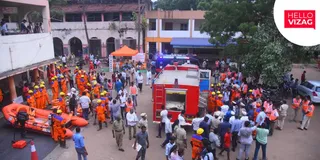The Living Root Bridges of Meghalaya, India, are a testament to the ingenuity of the Khasi people and the power of nature. These incredible structures, formed from the roots of Ficus elastica (rubber fig) trees, are not man-made bridges but rather organically grown marvels that have been cultivated and shaped over centuries.
Located primarily in the lush, rain-soaked forests of the Khasi Hills, these bridges provide crucial access through challenging terrain. The Khasi people have mastered the art of guiding the growth of the roots, using ingenious techniques to weave and train them into sturdy, durable, and incredibly long-lasting bridges. Some bridges are single spans, while others are multi-layered, demonstrating a remarkable level of skill and patience.
Formation and Cultivation:
The process of creating a living root bridge is a time-consuming and intricate one, taking decades, even centuries, to reach full maturity. It starts with guiding the aerial roots of a rubber fig tree across a stream or gorge. The roots are carefully trained and woven together, often using bamboo scaffolding or other natural materials to support their growth. Over time, the roots intertwine and thicken, creating a strong and flexible bridge capable of supporting significant weight.
Famous Examples:
Several famous living root bridges attract tourists from around the world. The Umshiang Double-Decker Root Bridge and the Nongriat Root Bridge are particularly well-known examples. Reaching these bridges often involves challenging treks through the rainforest, making the journey itself a part of the experience.
Eco-Tourism and Preservation:
The Living Root Bridges are a significant part of Meghalaya's unique cultural and natural heritage. Eco-tourism initiatives aim to protect these remarkable structures and support the local communities. Sustainable tourism practices are essential to ensure that these natural wonders are preserved for future generations.
Plan Your Visit:
If you plan to visit the Living Root Bridges, be prepared for a physically demanding trek through stunning but often challenging terrain. Local guides are highly recommended, as they can provide invaluable knowledge about the bridges, the surrounding ecosystem, and the local culture. Remember to respect the environment and the local community during your visit.
For more information and travel advice, consider researching reputable tour operators specializing in sustainable travel in Meghalaya.


































